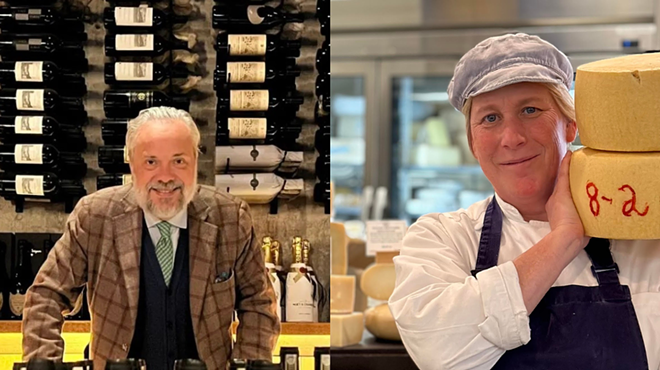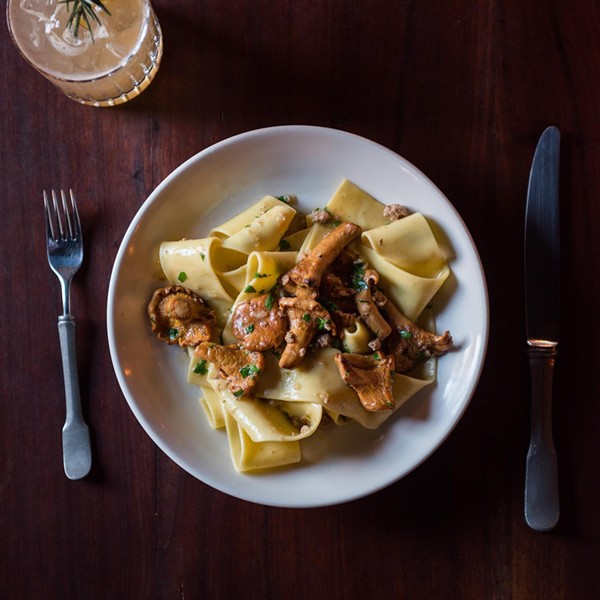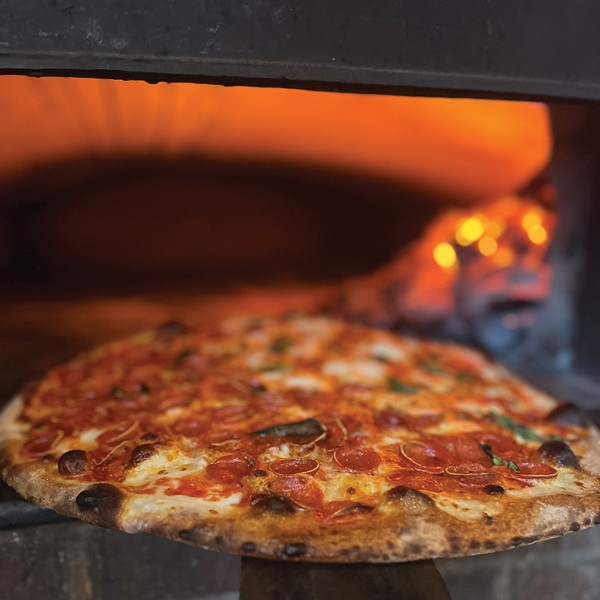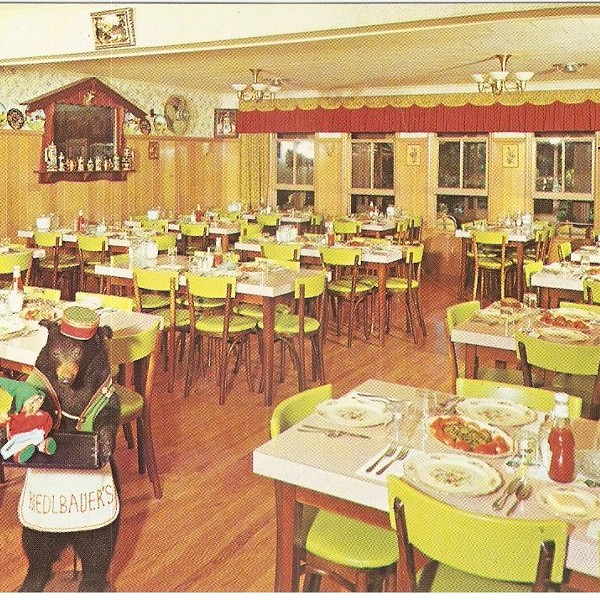The modernist design movement Bauhaus, associated with simplified forms and rational function, dismantled the boundaries between fine and applied arts. Its concepts come to mind when dining at Local 111, a restaurant housed in a former service station in the Columbia County village of Philmont. Local 111’s chef, David Wurth, uses the bistro’s close proximity to regional farmland to create new, rustic American cuisine that emphasizes local organic and grass-fed ingredients. The 39-seat eatery’s architectural elements also typify the Bauhaus idea that industrial materials and practical techniques may be reconciled with an individualist spirit and aesthetic.
Drawn to upstate farm culture, Local 111’s owners, transplanted Manhattanites Linda Gatter and Max Dannis, purchased the then-abandoned Schermerhorn’s Garage on impulse in 2004, motivated by a lecture about the revitalization of main streets delivered at the village hall. “We didn’t know what to do with it at first,” says Gatter, speaking in her airy, daylight-brightened establishment, which has been in operation since August 2006. “But we loved this walkable village of 1,200 people and wanted to contribute to its main-street vitality.”
Despite having no prior experience in food service, the couple decided to convert the building into a restaurant—part destination eatery, part local hangout. Gatter, an architect who graduated from MIT in the 1980s, came up with the design: an “adaptive” restoration. “For every project I try to think, ‘What does the space want to become?,’” she explains. “This is a service station, so I didn’t want to make it a farmhouse. I was aiming for something approachable, serene, clear, and not boring.”
Viewed from a Stewart’s Shop located directly across from its Main Street location, Local 111 (the name merges the concepts of “openness” and “accessibility” with the street address) looks like its former incarnation’s bohemian doppelgänger, in keeping with the tiny hill town’s farrago of sporadically rundown 20th-century storefronts and renovated Victorians. Framed by original cement blocks, now painted a soothing cream-beige and joined by a mocha lintel, the facade is still dominated by mullioned-glass, roll-down garage doors. Adjacent cedar planters create an affable boundary between the parking lot and a dog-friendly patio with seating for 20, suitable for sipping morning latte and relishing a freshly baked scone, while, as Gatter says, “watching who gets a speeding ticket.” The exterior’s details include the pin-striped awnings that flank the garage doors, above which the restaurant’s humble, block-lettered sign suggests that of a firehouse. In the evenings, subtle overhang lighting illuminates the mise-en-scène.
The main entrance opens onto a foyer refurbished in local black walnut and including a built-in bench. Plush, burnt-orange drapes along the far wall provide a dash of glamour. The opposite-facing walls are graced by large windows; installed across one, as if by Christo, a billowy scrim creates a grid between antechamber and dining room.
Accessed across a door-less threshold, a sense of expansiveness permeates the cozy central eating area, its stone-ground, earth-colored interior rising 13 feet. A discretely placed mirror provides the illusion of additional space while a ceiling fan, salvaged from the service station, heightens the effects of minimalist decor. Buffed and sprayed to achieve a yellow-tinted, marble-like finish and now featuring a radiant heating system, poured-concrete floors have replaced the grease pits. Bounded by a garage door, a row of dark leather banquettes forms an agreeable sightline along a far wall, complementing a singular artwork that stretches its length. Commissioned by Gatter and Dannis to capture the spirit of the surrounding rural landscape, The Promise of Light (2006), an oil painting by Great Barrington, Massachusetts, artist Gabrielle Senza, depicts a pastoral view looking north from Craryville, New York.
Made of mixed materials that evoke the industrial heritage of Philmont and crowned by a slotted wine rack spangled with miniature luminaries, the bar centers and unifies the main room. “I wanted something more rugged for the bar,” says Gatter, who hired a local steelworker to fabricate its frame and a Hillsdale, New York, woodworker to craft walnut and plywood into the top and underside, outfitting it with a foot rail. Edged in steel, square wooden tables elsewhere in the dining room repeat the bar’s patterning. Behind where a server would stand, a diner-style analogue clock floats on a backboard above a countertop where a chrome espresso machine rests like a combine in the garden.
Projecting an inviting ambiance, the ingenuity of the building’s redesign is reinforced by Chef Wurth’s inventively prepared, less-is-more food. A graduate of the Restaurant School in Philadelphia during a time when cooking was considered a trade skill as much as a culinary art, he nevertheless set out to elevate basic technique to fine craft, seeking an inspired and elegant, yet straightforward form. In 1986, Wurth found work in a small, open-kitchen Philadelphia restaurant that served seasonal local food. He became an advocate of Alice Waters-style unfussy, ingredient-driven recipes, also finding inspiration in provincial French and Italian dishes.
















